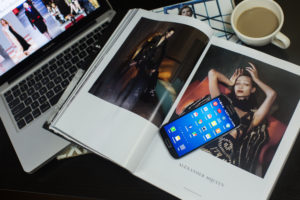
The fashion world has been full of scandal as the populace has finally caught on about the lack of diversity in the industry. The runways may have a few token black or asian women, but only if they have similar features to their white counterparts. The stores cater to sample-sized women if shoppers want anything that looks decent. In a world that has been whitewashed and thin since its beginning, where is the progress?
It seems that in the world of fashion blogging, diversity has found its home. With numerous blogs created and updated every day across the globe, audiences that crave unique fashion and fresh opinions that aren’t available in regular magazines flock to these sites. High-traffic bloggers are now taken as seriously as fashion editors in the industry. These bloggers now have privileges like sitting front row at fashion week, receiving clothing and beauty products to review as well as interviewing designers and fashion elites for their sites.
Fashionista.com states, “The medium [blogging] has forced the industry to recognize — and cater to — groups of women that it has completely ignored in the past.” With bloggers such as Asma P. creating a blog about modest fashion called Haute Muslimah and then seeing DKNY’s 2014 Ramadan collection, one has to wonder whether it is coincidence or if diverse bloggers really are making an impact on the industry. With the uproar over the lack of plus-sized options at Target, a fashion blogger complained to Target and now the company is creating their own plus-sized exclusive line. Fashion bloggers are now becoming the link between diverse markets and retailers. It’s ridiculous that retailers and the fashion elite are just realizing that consumers who buy their products want to see models with relatable body types wearing them.
With the current climate of the fashion industry in the midst of a generational shift, the evolution for change will be slow towards progress. Now that advertising dollars are in the eyes of every fashion conglomerate in the world, brands are making strides to reach audiences they have ignored in the past. It doesn’t take more than a Google search to see the combined buying power that black, latino and asian women generate, have a buying power of over one trillion dollars and growing in the fashion industry. Although it is sad that companies have to be monetarily bribed before they make fashion inclusive, at least shoppers know that they can turn to their local fashion bloggers for realistic clothing suggestions.
























